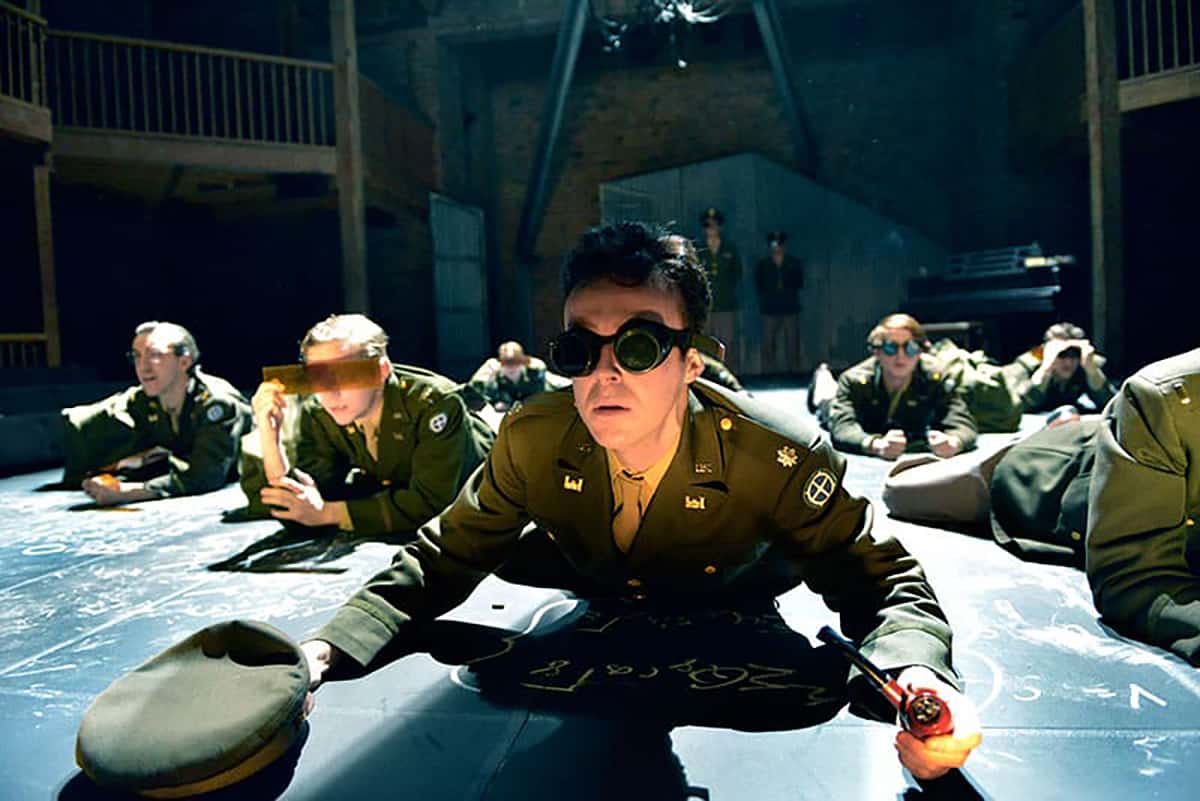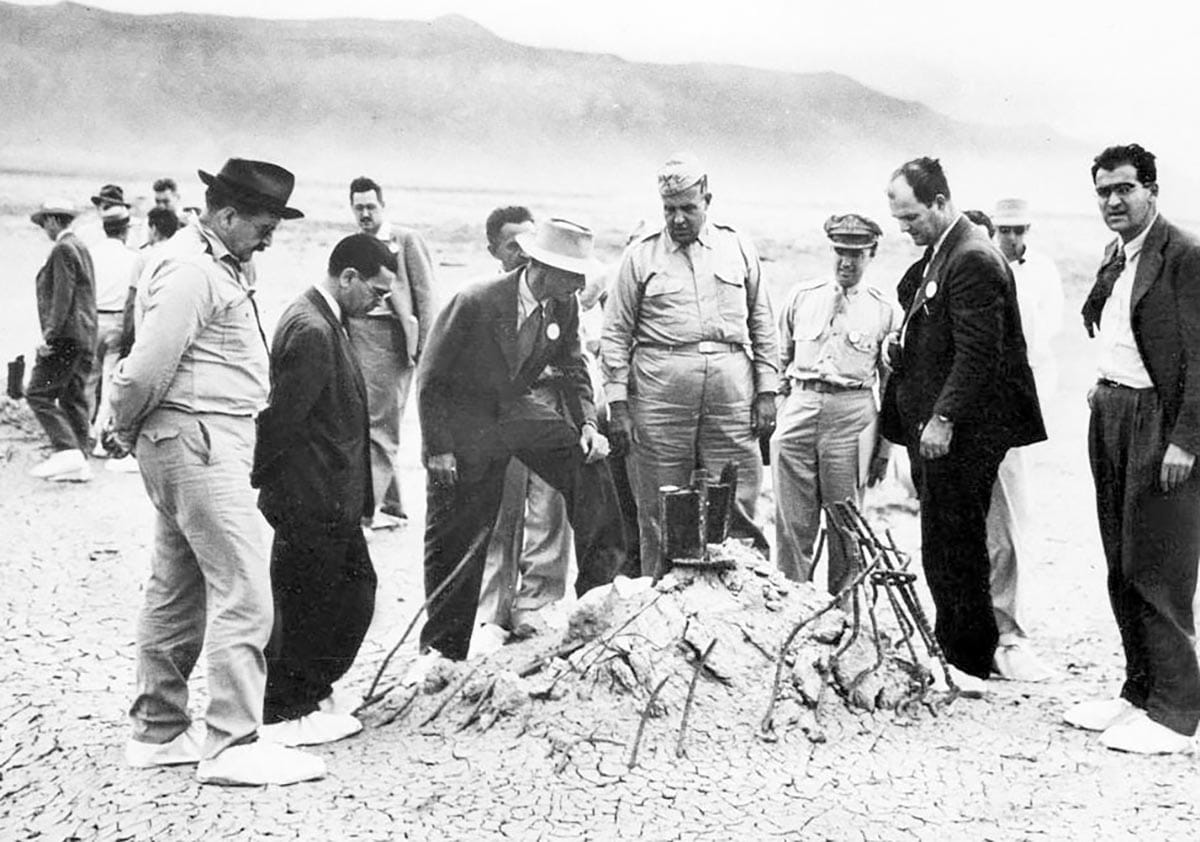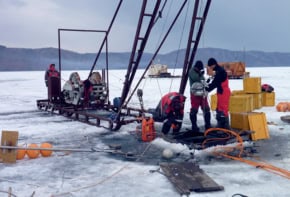Oppenheimer was the blockbuster movie of 2023 featuring a stellar cast of Hollywood A-listers. But as Sidney Perkowitz reminds us, many other movies, books and stage performances have examined the moral and political implications of the Manhattan Project too
In the summer of 1960 I set off for the Los Alamos National Laboratory in New Mexico, having just finished my bachelor’s degree in physics from the Polytechnic Institute of Brooklyn, now part of New York University. I had gained a high Q-level security clearance and was qualified to enter Los Alamos on a summer programme for students. It was only 15 years after Robert Oppenheimer and his team of scientists and engineers on the Manhattan project had detonated the world’s first atomic bomb – the famous 1945 Trinity test – but a sense of atomic history already pervaded the lab.
My research group reported to Stanislaw Ulam, the Polish mathematician who had co-invented a working hydrogen bomb with Edward Teller barely a decade earlier. Another member of the group, meanwhile, had helped assemble the Trinity bomb. Holed away on this desert plateau, which sits more than 2200 m above sea level, my abiding impression of Los Alamos was of the thin, crystalline air – flooded with sunshine – that seemed to promote a kind of otherworldly thinking. It was as if these strange conditions were needed for those great minds to develop their world-shaking bomb.

Most people, however, have never experienced Los Alamos first hand as I did. Instead, their impressions of Oppenheimer and the Manhattan project will rest on the many movies, documentaries and books made about that war-time era. Interest in his life and legacy is perhaps higher than ever thanks to Christopher Nolan’s blockbuster film Oppenheimer (2023). A huge box-office hit, it is, however, just the latest of many efforts to present the origins of the nuclear age, its science, people and policies including Oppenheimer’s central role.

What the movie Oppenheimer can teach today’s politicians about scientific advice
Nolan’s film tells the Los Alamos and Trinity stories chiefly through Oppenheimer’s story. He is depicted as a person, a scientist and a scientific leader, with the main narrative thread being the loss of his security clearance in 1954 – under suspicion of being a Soviet spy – following an investigation and interrogation by the Atomic Energy Commission (AEC). He is well played by Cillian Murphy, whose subtle facial expressions and body language show the many layers of Oppenheimer’s complex mind and personality: his blend of arrogance and naiveté; the scale of his emotions as he reacts to personal tragedy or to the atomic bombing of Japan.
The movie, for me, is a compelling portrait of a man who bore the burden of having created a terrible weapon that killed tens of thousands of people. He then faced the bitter irony that the same government and country that had asked him to build it declared him to be untrustworthy, ending any further involvement of his in building or advising on nuclear weapons. But even with a running time of three hours, the film cannot fully tell the complex and difficult story of Oppenheimer and the bomb. Fortunately, there are many other movies as well as books and plays (see box below) to turn to.
Oppenheimer through the decades
The very first cinematic portrayal – The Beginning or the End – was released in 1947, barely two years after the end of the war. Part fiction, it is framed as a documentary about the Manhattan Project, made for the benefit of future humanity, should we survive the nuclear age. It tells the story of the bomb from the discovery of nuclear fission to the destruction of Hiroshima and Nagasaki. Actors play Oppenheimer (although he is not a major character), Albert Einstein and General Leslie Groves – the military head of the Manhattan Project – and others in fictionalized but more-or-less historically and scientifically valid scenes.
Significantly, the film is ambivalent about the morality of using the bomb. Members of the fictional bomber crew at Hiroshima are stunned by the inferno they have wrought, but imply that it is payback for Japan’s treacherous attack on Pearl Harbor. A fictional young physicist on the bomb project is its conscience, regularly expressing doubts about the bomb. As he dies of radiation sickness, he wonders if this is retribution for working on the bomb. In a bizarre final scene, though, his voice from the grave predicts that atomic energy will give humanity a golden future.
As Los Alamos and knowledge of nuclear war entered the general consciousness, it wasn’t long before science fiction got in on the act. Several science-fiction movies in the 1950s featured atomic blasts or monsters created by nuclear radiation, notably Godzilla (1954), in which radiation awakens a gigantic prehistoric reptile that rampages through Tokyo. The Day the Earth Stood Still (1951) presented an equally bleak message, as an alien emissary warns humanity to be careful with nuclear weapons or face dreadful consequences.
Other feature films about nuclear war were just as sombre but more realistic. In On the Beach (1959), a catastrophic global nuclear exchange occurs (possibly by accident), after which the inhabitants of Australia and an American nuclear submarine crew despairingly await a radioactive cloud that will kill these last remnants of humanity. Then there is the classic French New Wave film Hiroshima Mon Amour (1959), which intertwines our perceptions of Hiroshima’s nuclear devastation and of a hopeless love affair to heighten our responses to both.
Later movies to deal memorably with nuclear war include Dr. Strangelove or: How I Learned to Stop Worrying and Love the Bomb (1964) and Fail-Safe (1964). Only in 1989, though, did another feature film depict the Manhattan Project. That was Fat Man and Little Boy, which uses the code names for the bulky Nagasaki plutonium bomb and smaller Hiroshima uranium bomb. Oppenheimer (Dwight Schultz) features prominently in the film, but he is overshadowed by Paul Newman as General Groves, though both are superficially drawn.
The film does, however, present the technical challenges in developing the bomb, such as designing trigger mechanisms to rapidly bring sub-critical pieces of fissionable material to critical mass and initiate the nuclear explosion. Fat Man and Little Boy also spotlights nuclear dangers, as a fictional Los Alamos physicist dies miserably from radiation in circumstances portrayed like those that killed two real physicists, Harry Daghlian and Louis Slotin, who died after Trinity while conducting experiments that want horrifically wrong.
Bomb documentaries
The 1980s saw the start of a number of documentaries about the building of the bomb, the most important of which is The Day After Trinity (1981). It relies solely on real US government footage, newsreels and photos. Directed by Jon Else, it also uses filmed interviews with 20 people who knew or worked with Oppenheimer or who were affected by the atomic bomb project. There are even archival appearances by Oppenheimer and other major figures such as US President Harry Truman.
The documentary vividly portrays Oppenheimer’s life, intellect and thoughts. Hans Bethe, who headed the theory section at Los Alamos and later won the 1967 Nobel Prize for Physics for his work on stellar nucleosynthesis, is shown raising one of many questions about Oppenheimer’s complex personality. “We ask,” he wonders on screen, “why people with a kind heart and humanist feelings [would] work on weapons of mass destruction.”
One answer comes from Oppenheimer’s close friend, Berkeley professor Haakon Chevalier. In an interview in the film, he explains that Oppenheimer, who was born in the US into a Jewish family with strong ties to Europe, had been greatly alarmed by the rise of Nazism. We learn too about Oppenheimer’s rare scientific talent, with Bethe claiming he was “intellectually superior” to everyone at Los Alamos. “[He] knew and understood everything…chemistry or theoretical physics or machine shop. He could keep it all in his head.”
Like The Beginning or the End, the film follows the story through to Hiroshima but treats moral questions more deeply. Courageously, it includes painful footage of the suffering of burned and injured adults and children after the Hiroshima bombing, turning abstract issues of morality into the real and devastating consequences for innocent people. It also shows that some Los Alamos scientists were concerned about the moral issues the bomb would raise.
One was the physicist Robert Wilson, who headed the experimental research division at Los Alamos and later became the first director of the Fermi National Acceleratory Laboratory in the US. In the film Wilson tells how, sometime between April 1945 and the Trinity test in July, he called a meeting about whether work on the test bomb should continue. Oppenheimer tried to dissuade him, but the meeting went ahead anyway. Oppenheimer told the scientists present that the Trinity test was essential so the world would know that this “horrible thing” existed as the new United Nations was being formed. The remarks convinced the attendees to continue preparing the bomb, though, post-war, Wilson gave up his security clearance and never again worked on nuclear energy or bombs.
In The Day After Trinity, an interviewer is shown asking Oppenheimer in the 1960s about controlling the spread of nuclear weapons. “It’s 20 years too late,” Oppenheimer says quietly but firmly. “It should’ve been done the day after Trinity.” His idealistic wish for international nuclear control and his opposition to the hydrogen bomb are well known. Indeed, they weighed against him in the 1954 hearing, the stage for which was partly set by the rabid anti-communism of US Senator Joseph McCarthy.
Among those who testified for Oppenheimer were the Nobel laureates Enrico Fermi and Isidor Rabi as well as Bethe and Groves; his former colleague Edward Teller, who championed the hydrogen bomb, spoke against him. But as The Day After Trinity also shows, Oppenheimer’s own unforthcoming testimony served him poorly. As Robert P Crease explains elsewhere in Physics World, he was flummoxed in questioning by attorney Roger Robb, who accused Oppenheimer of going beyond science and trying to counsel on military strategy.
The film makes clear that the revocation of Oppenheimer’s clearance was a great blow. His physicist brother Frank tells us “it really knocked him for a loop;” Bethe relates that “he was not the same person afterwards”; and Rabi says the revocation “actually almost killed him spiritually, yes. It achieved what his opponents wanted to achieve. Destroyed him.”
Oppenheimer in literature and on stage
The inherent drama of the atomic-bomb story, its moral issues, and the intricacies of Robert Oppenheimer’s character have inspired not just countless movies and documentaries (see main text) but also stage plays and an opera. Perhaps the earliest of these is In the Matter of J Robert Oppenheimer by German playwright Heinar Kipphardt, which was first performed in 1964. Whereas Christopher Nolan’s Oppenheimer film weaves the Atomic Energy Commission hearing through a larger story, Kipphardt’s play is set entirely inside the hearing room and is based on thousands of pages of actual testimony. One reviewer in the New York Times said that a 2006 off-Broadway revival posed “questions about moral relativism, the limits of vigilance and human decency”.

Later, Oppenheimer by the British dramatist Tom Morton-Smith took a broader view. Premiered by the Royal Shakespeare Company in 2015, it starts with Oppenheimer’s left-wing connections in the 1930s and ends with the Trinity test. It includes the physics of the bomb, depicts figures such as Edward Teller, and comments on Oppenheimer’s moral stance toward building the bomb. Reviewers noted the epic Shakespearean sweep of Oppenheimer’s rise and fall: Physics World credited the play with carrying “considerable emotional punch”, while the Guardian said it evoked “an overall ache for humanity”. Later, the Los Angeles Times said of a California revival in 2018 that “the physics is dazzling, but even more intriguing are the complicated human beings behind the equations”.
If these stories are indeed epic, opera is surely the most powerful medium for telling them, as in Doctor Atomic by American composer John Adams with libretto by Peter Sellars. First presented at the San Francisco Opera in 2005, it concentrates on the reactions of Oppenheimer and others at Los Alamos as tension escalates with the approach of the Trinity test. Writing in Physics World, the historian Robert P Crease called one haunting scene, which conveys the turmoil in Oppenheimer’s soul that he had never openly expressed, “opera at its finest”. But Crease and others took issue with the characterizations of some of the leading figures. A review of a 2018 production at the Santa Fe Opera near Los Alamos says it does “spectacle” well, but “conveys a feeling of grief…rather than telling a story”.
We should not forget either the countless books about the nuclear age, two of the most famous of which each won a Pulitzer Prize. The first is Richard Rhodes’ The Making of the Atomic Bomb (1986), which is the authoritative study of the bomb project and its leading figures, including Oppenheimer. The other is American Prometheus: the Triumph and Tragedy of J Robert Oppenheimer (2005) by journalist Kai Bird and historian Martin J Sherwin. Perhaps the definitive Oppenheimer biography, it inspired Oppenheimer the movie and, as its title shows and as the film replicates, depicts Oppenheimer’s fall from grace in 1954.
For every generation
Taken together, these four movies – The Beginning or the End, The Day After Trinity, Fat Man and Little Boy and Oppenheimer – convey the urgency of the atomic project well. Fictional parts aside, they provide a reasonably accurate picture of the start of the nuclear era, while giving a decent scientific explanation of nuclear chain reactions, the difficulties of obtaining enough uranium-235 and plutonium to make bombs, and the technical ingenuity that made the bomb work. The strategic and political thinking behind the decision to bomb Japan – and the opposition to that step – are covered too.
But why do we need to keep recreating the story? One answer comes from Else, who directed The Day After Trinity. As he recently stated: “These stories have to be retold every generation, and they have to be told by new storytellers.” Nuclear weapons, in other words, are so dangerous that we have to underline their menace in new and different ways. Oppenheimer does this by focusing on the personality of Oppenheimer himself and by bringing a roster of Hollywood A-listers.

The biographer who inspired Christopher Nolan’s blockbuster film Oppenheimer
Excellent though the acting is in Oppenheimer, I feel it is The Day After Trinity that more powerfully shows us the real man and his contradictions, thanks also to comments from those who knew him. Rabi describes, for example, how Oppenheimer proudly strode along immediately after the Trinity blast, like a gunslinger in the classic film High Noon (1952). Later, however, as Rabi reminds us, Oppenheimer spoke out against the hydrogen bomb because it would not serve as a military weapon but only to kill civilians.
Oppenheimer’s doubts are made clear in his photo at the time of the AEC hearing, which shows the gaunt cheeks and haunted eyes of a man who has been spiritually tested and torn by building the bomb as was asked of him, seeing its destructive use that won the war, then finding himself rejected and his career destroyed. It is, in a sense, a tragedy, and why the book American Prometheus was so aptly titled. Oppenheimer was a scientific leader in a time and place that forced him, and others, into impossible moral choices.
A final chapter
Oppenheimer is not the final word. Unmentioned in the film is that in December 2022 Jennifer Granholm – secretary of the US Department of Energy, the successor to the AEC – announced that she had annulled the revocation of Oppenheimer’s security clearance. This was being done, Granholm said, to correct the record and honour his “profound contributions to our national defense and scientific enterprise at large”. This was primarily due to efforts by the authors of American Prometheus.

I can, however, personally attest that the scientific community not only rejected the original AEC decision but also revered Oppenheimer. As a graduate physics student in the early 1960s at the University at Pennsylvania, I went to hear him give a public lecture to a crowd of hundreds filling a large auditorium. Then nearly 60, he looked – from my vantage point in the hall – frail and even ethereal, but he must have had a tough core that sustained him through Los Alamos and the AEC hearing to stand before many eager to hear him.
Looking back, it’s clear that the atomic-bomb project affected the entire physics community. Oppenheimer, Einstein and others spoke out against the dangers of nuclear war, and physicists still do, through organizations such as the Bulletin of Atomic Scientists and Scientists for Global Responsibility.
But as the US historian Daniel Kevles wrote in his 1978 book The Physicists: the History of a Scientific Community in Modern America, the success of the Manhattan Project also gave physicists “the power to influence policy and obtain state resources largely on faith”. Nuclear and high-energy physics benefitted from this new regard, but it also raised the prestige of physics in general and led to more financial support. That too is part of the complex scientific legacy and moral reckoning from the story of Oppenheimer and the atomic bomb.
As for me, my last direct link with the nuclear era came in 2002, when with other physicists attending a meeting in Albuquerque, I had the rare chance to visit the Trinity site at Alamogordo, New Mexico. A small stone pyramid with a plaque marked ground zero, in the midst of a nearly infinite sweep of land. The natural barrenness was a sign of what a nuclear bomb could do to a city. Near the pyramid, a fence surrounded a small mound of weathered concrete and metal. This was a remaining trace of the 30 metre-tall steel tower atop which the bomb was detonated, and which had vanished in the blink of an eye.




